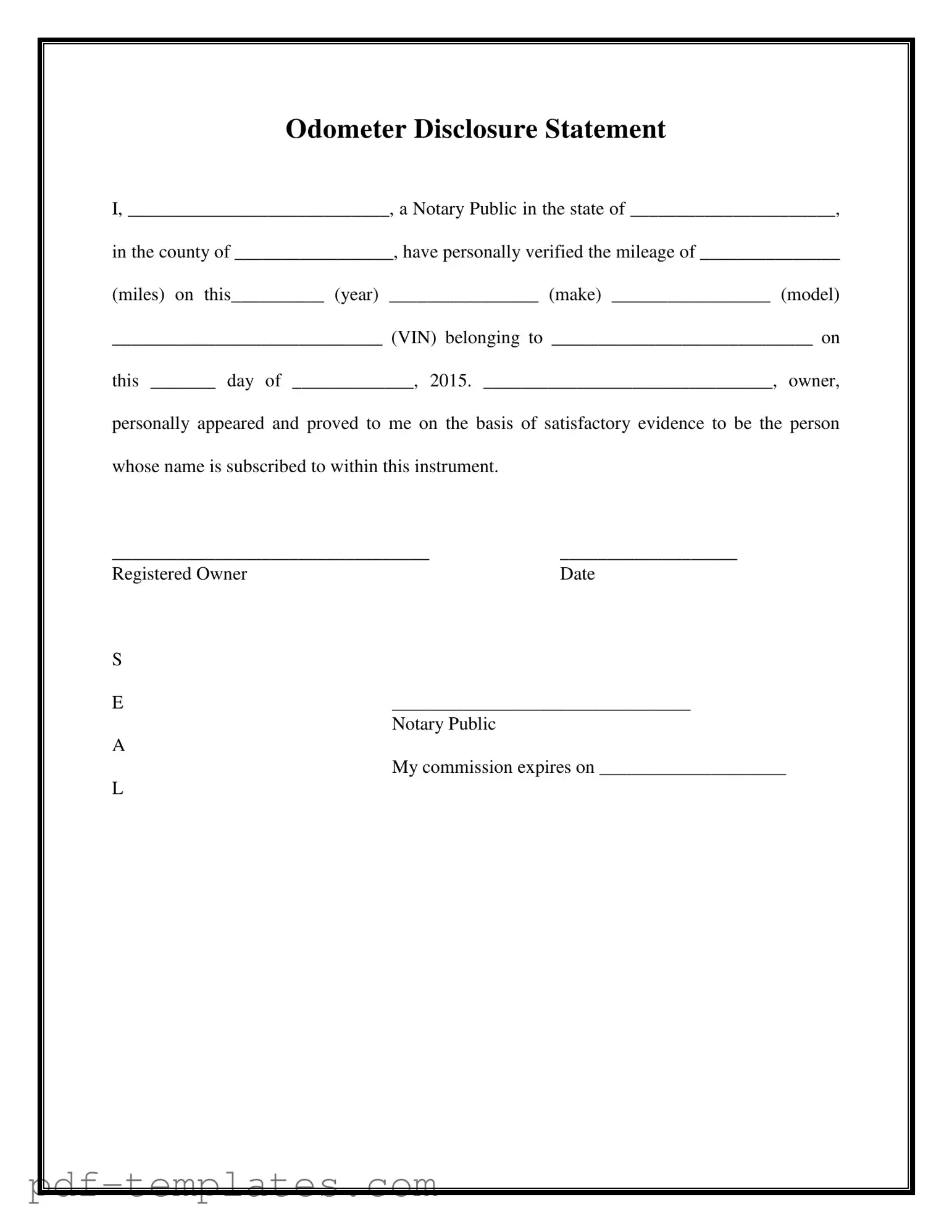The Bill of Sale is a crucial document in vehicle transactions. It serves as proof of the sale and includes details about the vehicle, such as the make, model, and VIN. Like the Notarized Odometer Statement, it requires signatures from both the seller and the buyer. This document protects both parties by providing a clear record of the transaction, ensuring that ownership is properly transferred.
The Vehicle Title is another important document that indicates legal ownership of a vehicle. When a car is sold, the title must be transferred from the seller to the buyer. This process often involves completing a section of the title and may require notarization, similar to the Odometer Statement. Both documents confirm the identity of the parties involved and the specifics of the vehicle.
The Title Application is used when registering a vehicle for the first time or transferring ownership. It collects essential information about the vehicle and its owner. Just like the Notarized Odometer Statement, it may require verification of the odometer reading. This document ensures that all necessary information is provided to the state for proper registration.
The Release of Liability form protects the seller from any future claims related to the vehicle after the sale. It confirms that the seller is no longer responsible for the vehicle once ownership is transferred. This form, like the Notarized Odometer Statement, is often signed by both parties to validate the transaction and ensure clarity regarding ownership.
The Application for Duplicate Title is used when the original title is lost or damaged. This document requires details about the vehicle and may also necessitate an odometer disclosure. Similar to the Notarized Odometer Statement, it serves to verify the vehicle's identity and ownership, ensuring that the correct information is recorded with the state.
The California Motor Vehicle Power of Attorney form is an essential tool for car owners, allowing them to delegate responsibilities such as vehicle registration and document signing to a trusted individual. It ensures that tasks related to vehicle ownership can still be managed effectively in the owner's absence or incapacitation. For those in California seeking additional resources, All California Forms can provide further assistance in navigating vehicle-related legal processes.
The Vehicle Registration is a document issued by the state that allows a vehicle to be legally driven on public roads. It includes details about the vehicle and its owner. Like the Notarized Odometer Statement, the registration process often involves confirming the odometer reading to ensure accurate records are maintained by the state.
The Emissions Certificate is required in some states to ensure that a vehicle meets environmental standards. This document verifies that the vehicle has passed emissions tests. While it focuses on environmental compliance, it shares similarities with the Notarized Odometer Statement in that both documents require verification and confirmation of vehicle details before a transaction can proceed.
The Power of Attorney for Vehicle Transactions allows one person to act on behalf of another in matters related to vehicle ownership. This document may be used when someone cannot be present for the sale or transfer. Like the Notarized Odometer Statement, it requires signatures and may need notarization to confirm the identities of the parties involved, ensuring the transaction is legitimate.
